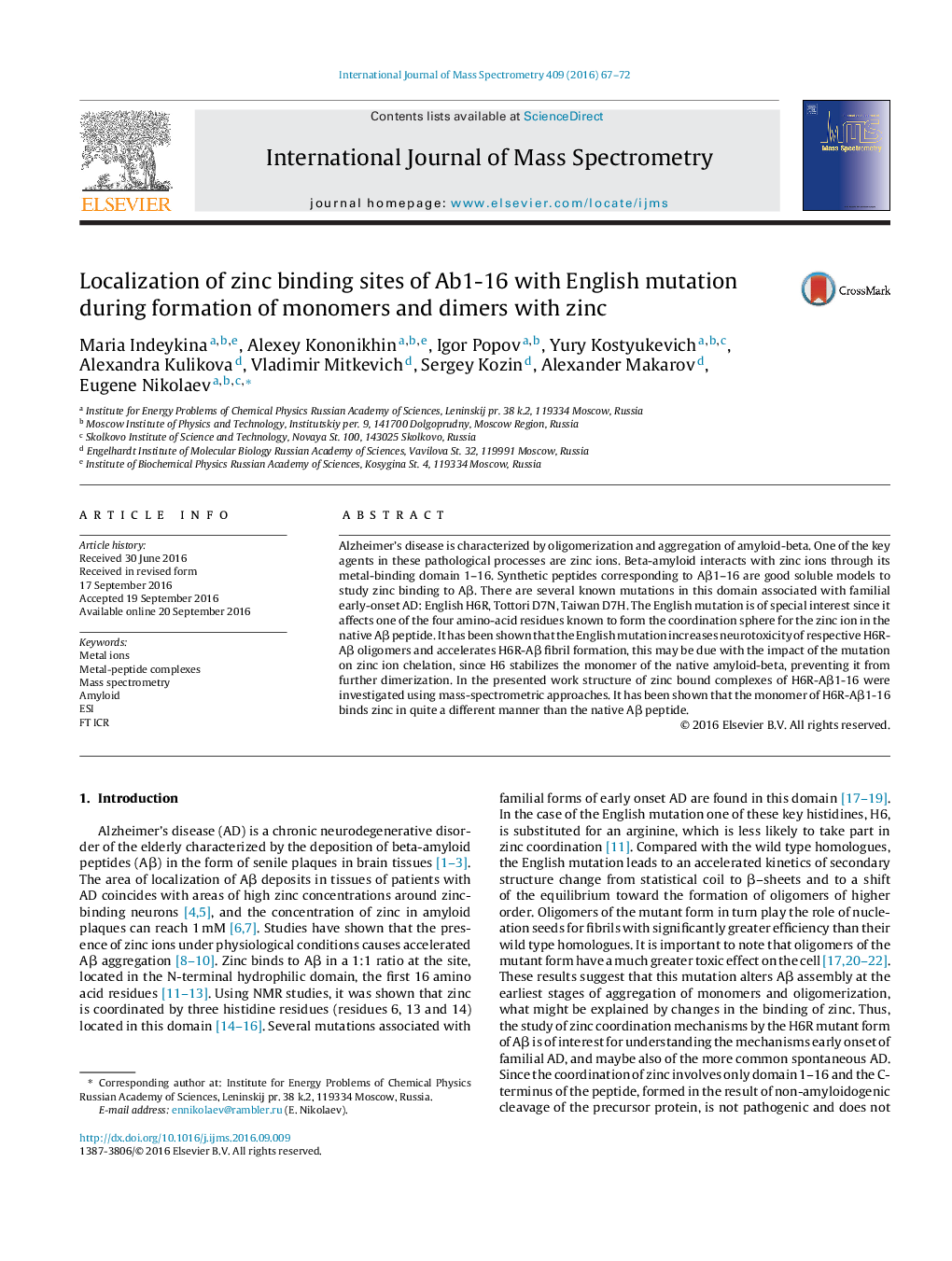| Article ID | Journal | Published Year | Pages | File Type |
|---|---|---|---|---|
| 5134362 | International Journal of Mass Spectrometry | 2016 | 6 Pages |
Alzheimer's disease is characterized by oligomerization and aggregation of amyloid-beta. One of the key agents in these pathological processes are zinc ions. Beta-amyloid interacts with zinc ions through its metal-binding domain 1-16. Synthetic peptides corresponding to Aβ1-16 are good soluble models to study zinc binding to Aβ. There are several known mutations in this domain associated with familial early-onset AD: English H6R, Tottori D7N, Taiwan D7H. The English mutation is of special interest since it affects one of the four amino-acid residues known to form the coordination sphere for the zinc ion in the native Aβ peptide. It has been shown that the English mutation increases neurotoxicity of respective H6R-Aβ oligomers and accelerates H6R-Aβ fibril formation, this may be due with the impact of the mutation on zinc ion chelation, since H6 stabilizes the monomer of the native amyloid-beta, preventing it from further dimerization. In the presented work structure of zinc bound complexes of H6R-Aβ1-16 were investigated using mass-spectrometric approaches. It has been shown that the monomer of H6R-Aβ1-16 binds zinc in quite a different manner than the native Aβ peptide.
Graphical abstractDownload high-res image (133KB)Download full-size image
